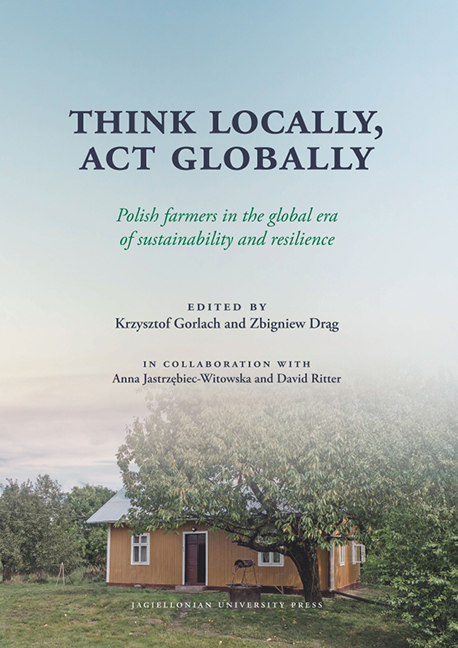Book contents
- Frontmatter
- Contents
- Family Farming: A foreword
- An Introductory Letter from the First Editor: Where the horses, cows, and even cats had their own names
- Part One Theoretical and Methodological Considerations
- Part Two Changes in the Post-Communist Transformation
- Part Three Diversification of Farmers’ Strategies
- Part Four Some Independent Studies
- Conclusion: Some Final Remarks from the First Editor
- Afterword: Renewing a Sociology of Agriculture
- Biograms
Chapter Ten - Regional Farming Strategies in Poland of 2017
Published online by Cambridge University Press: 16 July 2022
- Frontmatter
- Contents
- Family Farming: A foreword
- An Introductory Letter from the First Editor: Where the horses, cows, and even cats had their own names
- Part One Theoretical and Methodological Considerations
- Part Two Changes in the Post-Communist Transformation
- Part Three Diversification of Farmers’ Strategies
- Part Four Some Independent Studies
- Conclusion: Some Final Remarks from the First Editor
- Afterword: Renewing a Sociology of Agriculture
- Biograms
Summary
Introductory Remarks
The results of the analyses presented in previous chapters pointed quite directly to differentiation of the family farms situation in Poland, particularly addressing the economic dimension of farming. Although farms with an annual income of up to 30 thousand PLN (in 2016) were the dominant category, comprising around three quarters of all surveyed farms, there were also farms with no reported income. Such farms made a marginal group of less than 5%. Farms with an annual income of over 30 thousand PLN constituted one fifth of the studied farms and those with income over 60 thousand PLN per year made up one tenth of the studied sample. Even a casual look at the data could lead to the realization that the area of utilized agricultural land was the main factor in determining income level. The average annual income of large farms of at least 15 ha exceeded 100 thousand PLN, while farms with areas smaller than 15 ha had an average income below 15 thousand PLN. Additionally, the analyses considering both categories of farms demonstrated that they differed significantly in terms of applied development strategies, including matters such as level of farm mechanization (measured by the value of machines and equipment), renting land from others, using loans and bank credits to finance the production, preferences in divisions of production and preferences for supply and outlet markets. It can be stated that the utilized agricultural area influences to a significant extent the development strategy adopted by a particular farm and, in effect, determines its profitability.
In Poland, there is a territorial diversification in the area of family farms, which is a consequence of historical factors and conditions that will not be analyzed here. In our studies, this diversification was reflected at the regional level (according to the NUTS classification: level-1), at the levels of provinces/voivodeships (level NUTS 2 and at the county level. The 2017 study results indicated that the average farm area in the Southern Region was 4 ha, while in the Northern Region it was around 15 ha. At the level of provinces/voivodeships, the average farm area in Lesser Poland and Subcarpathian did not exceed 4 ha, but in Warmian-Masurian, and Western Pomerania, this figure oscillated around 20 ha.
- Type
- Chapter
- Information
- Think Locally, Act GloballyPolish farmers in the global era of sustainability and resilience, pp. 417 - 458Publisher: Jagiellonian University PressPrint publication year: 2021



